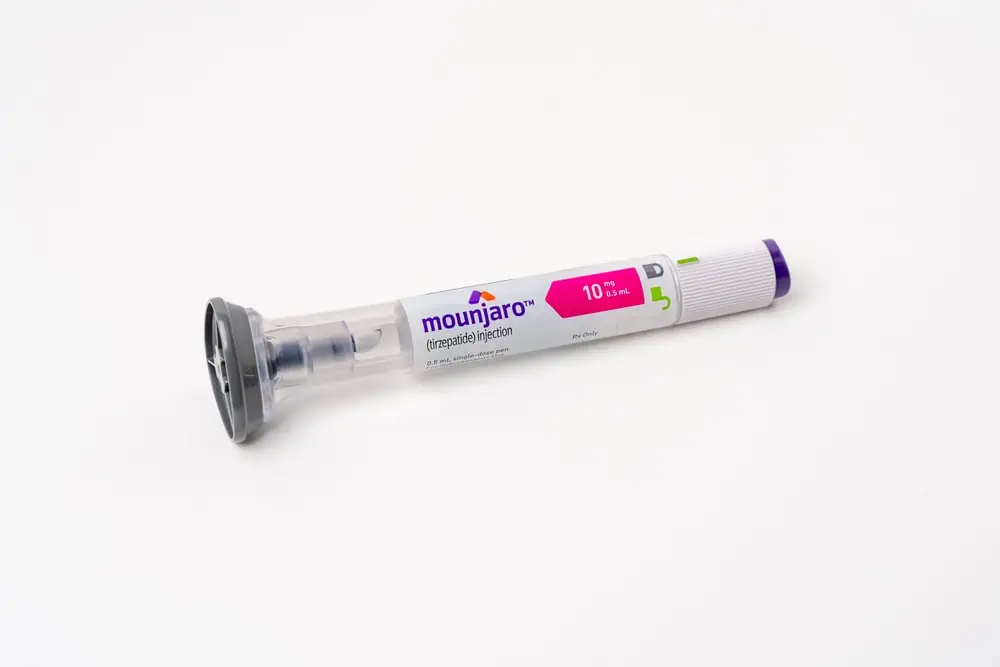Castor oil has been used for centuries as a natural remedy for various ailments, including knee joint pain. Its anti-inflammatory and analgesic properties make it a popular choice for those seeking alternative methods to manage their discomfort. When applied properly, it may help alleviate pain and reduce inflammation, offering a complementary treatment for knee joint issues. People using castor oil on various conditions have seen huge improvements.
Before using castor oil, it’s important to understand how it works and what makes it potentially effective. The oil, which is extracted from the seeds of the Ricinus communis plant, contains ricinoleic acid, a substance thought to be responsible for its medicinal benefits. To achieve the best results for knee joint pain, it is essential to prepare and apply the oil in a consistent and safe manner.
Key Takeaways
- Castor oil is used as a natural treatment for knee joint pain due to its anti-inflammatory properties.
- Proper preparation and application are crucial for the effective use of castor oil on the joints.
- Consulting with a healthcare provider is advised to avoid potential side effects and to explore complementary treatments.
Understanding Knee Joint Pain and how to best use castor oil for knee joint pain.
When we talk about knee joint pain, we’re referring to discomfort that arises from the complex structure of the knee, which includes bones, cartilage, ligaments, and tendons. Recognizing the root causes, symptoms, and specific types of arthritis can help us better understand and address this common ailment.
Causes of Knee Pain
Knee pain can stem from a variety of issues, ranging from acute injuries to chronic diseases. Common causes include:
- Trauma: Injuries such as fractures, torn ligaments, and meniscus tears.
- Overuse: Repetitive motion can lead to conditions like bursitis and tendonitis.
- Degeneration: Osteoarthritis is a frequent cause of knee pain due to the wearing away of cartilage.
Symptoms and Diagnosis
The symptoms of knee pain can provide clues to the underlying condition and include:
- Pain: Ranging from mild to severe, potentially worsening with activity.
- Swelling and Inflammation: Often a response to injury or arthritis.
- Joint Stiffness: Difficulty in movement, especially after periods of rest.
Diagnosis typically involves a physical examination, and imaging tests like X-rays or MRI scans may be utilized to gain more insight into the cause of knee pain.

Types of Arthritis
Arthritis is a major contributor to knee pain and includes several types:
- Osteoarthritis: Caused by the breakdown of joint cartilage and bones.
- Rheumatoid Arthritis: An autoimmune disorder leading to inflammation of the joint lining.
Both result in joint stiffness, swelling, and pain, impacting the quality of life.
Related Complications
Ignoring knee joint pain can lead to complications that can affect our daily activities. These complications may include:
- Chronic Pain and Disability: Long-term discomfort can limit mobility.
- Muscle Weakness: Reduction in muscle strength around the knee affects joint support.
- Decreased Range of Motion: Movement becomes limited, impacting daily tasks.
Benefits of Castor Oil
Castor oil has been recognized for its therapeutic effects, particularly in reducing pain and inflammation associated with various conditions. We’ll explore its specific properties that make it beneficial for these purposes.
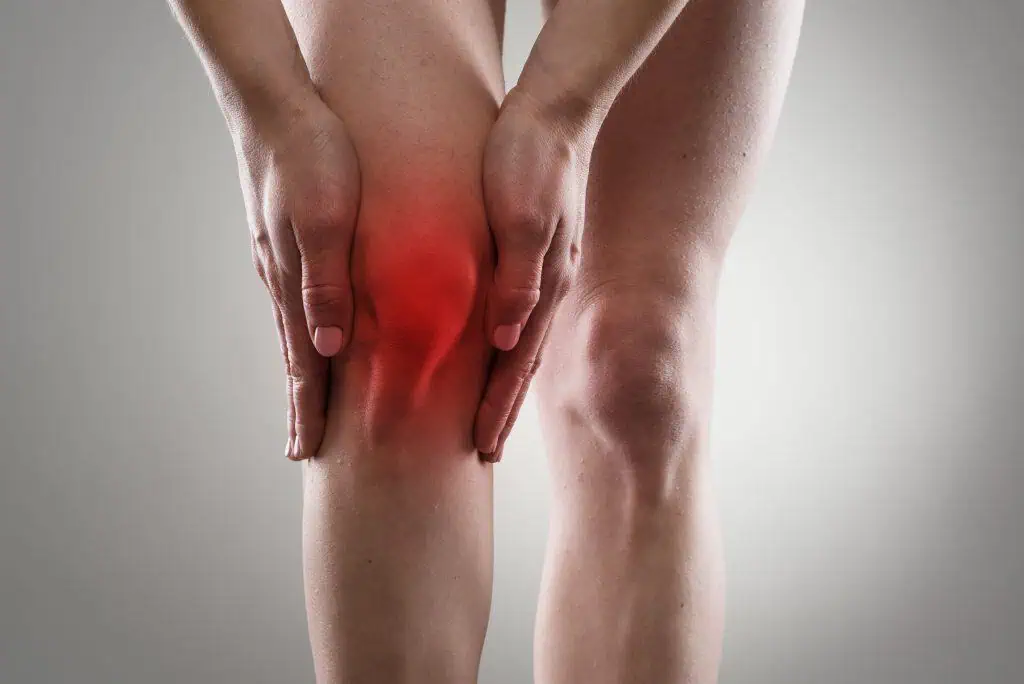
Anti-Inflammatory Properties
Castor oil possesses notable anti-inflammatory properties, which can be highly beneficial for reducing swelling and alleviating pain in inflamed joints. These properties stem from its ability to inhibit the response of the body’s immune system that can lead to inflammation.
Ricinoleic Acid and Pain Relief
The primary component of castor oil, ricinoleic acid, has been identified as having analgesic properties. By applying castor oil, we leverage these properties to potentially relieve pain, as ricinoleic acid has been shown to be effective in providing pain relief.
Castor Oil as a Medicinal Remedy
Castor oil has a long history as a medicinal remedy for a range of ailments. Beyond its anti-inflammatory and analgesic properties, its health benefits include boosting blood flow which can help in the healing process, thus reinforcing its use in therapeutic applications.
Preparation for Use
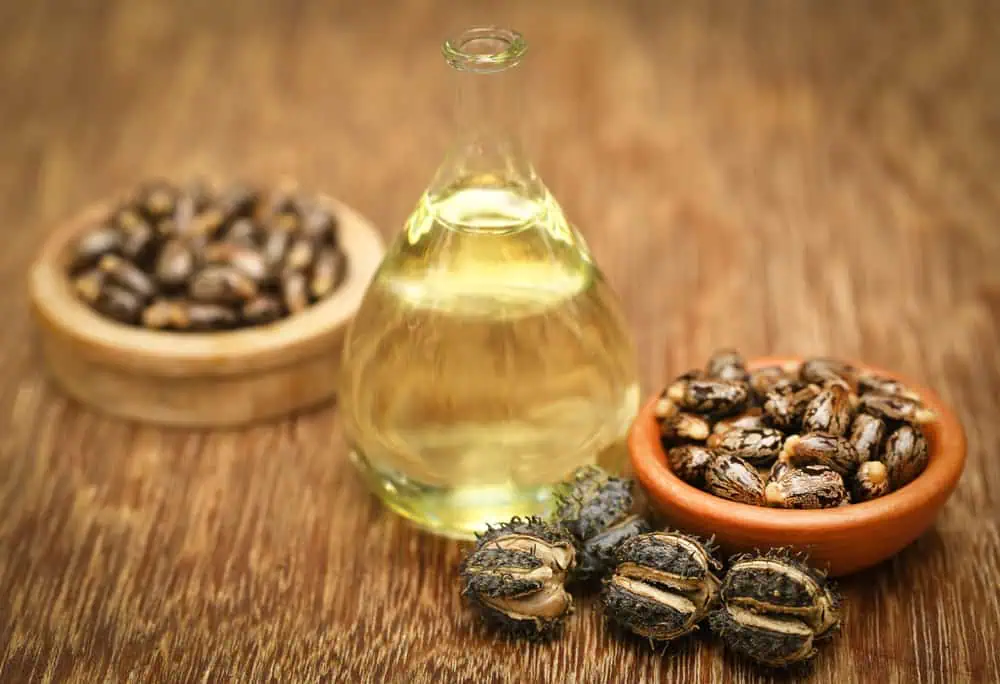
Before we apply castor oil for knee joint pain relief, it’s crucial to select high-quality oil and prepare a castor oil pack properly, while also adhering to safety precautions to ensure an effective and secure application.
Selecting Quality Castor Oil
When choosing castor oil, it’s imperative to opt for cold-pressed, pure, and preferably organic castor oil to guarantee the highest level of purity and efficacy. The absence of solvents in the extraction process ensures that the therapeutic qualities of the oil are retained, which can be particularly beneficial when treating joint pain.
Creating a Castor Oil Pack
To create a castor oil pack, you’ll need the following materials:
- High-quality castor oil
- Cotton or flannel cloth
- Plastic wrap, an old towel, or any material to prevent staining
- A heating pad or a hot water bottle
Steps:
- Soak the cotton or flannel cloth in warm castor oil. Ensure that it’s saturated but not dripping.
- Place the soaked cloth directly on the affected knee area.
- Cover the cloth with plastic wrap. This helps maintain the pack’s position and prevents oil from staining other surfaces.
- If desired, place a hot water bottle or warm heating pad over the wrap to enhance the oil’s penetration with heat.
- Relax with the pack in place for at least 30 minutes to allow the castor oil to soak into the skin thoroughly.
Safety Precautions
While castor oil is generally safe for topical use, there are important safety measures that we must observe:
- Avoid using near open flames: As castor oil is flammable, keep it away from heat sources that could ignite the oil.
- Skin sensitivity: Test the oil on a small part of your skin first to ensure that there’s no allergic reaction.
- Fabric care: Remember that castor oil can stain fabrics, so use an old towel or wear old clothes during the treatment.
- Keep plastic wrap secure: Be cautious to avoid suffocation hazards, especially when used around small children or pets.
Application Methods
In this section, we’ll guide you through different proven techniques to apply castor oil for alleviating knee pain. We focus on methods that not only target pain relief but also aim to enhance joint mobility and reduce stiffness.

Topical Application
To directly target knee pain, castor oil packs are an effective method. Begin by soaking a piece of cloth in castor oil, ensuring it’s saturated but not dripping. Place the oil-soaked cloth on the affected knee, then cover it with cellophane or cling film to prevent leakage. Leaving the pack in place for an extended period allows the castor oil to penetrate the skin and help ease joint stiffness. For detailed instructions on making and using castor oil packs for knee pain, visit Stylecraze.
Massage Techniques
Massaging the knee with warm castor oil is another technique to alleviate discomfort. Warm the castor oil slightly before applying it with gentle, circular motions over the knee joint. This method helps to improve circulation and can be particularly soothing for conditions like sciatica and back pain. It’s essential to perform the massage gently to avoid further irritation of the joint.
Heat Treatment
Enhancing the effectiveness use of castor oil with heat is a common practice. After applying the oil to the knee, you can use a heating pad to intensify its pain-relieving properties. The heat helps the oil penetrate deeper and may also increase blood flow, further aiding in the relief of knee pain and stiffness. Always check the temperature of the heating pad to ensure it’s comfortable and safe to use on your skin. For a more detailed explanation on how to incorporate heat treatment, check Rip Toned.
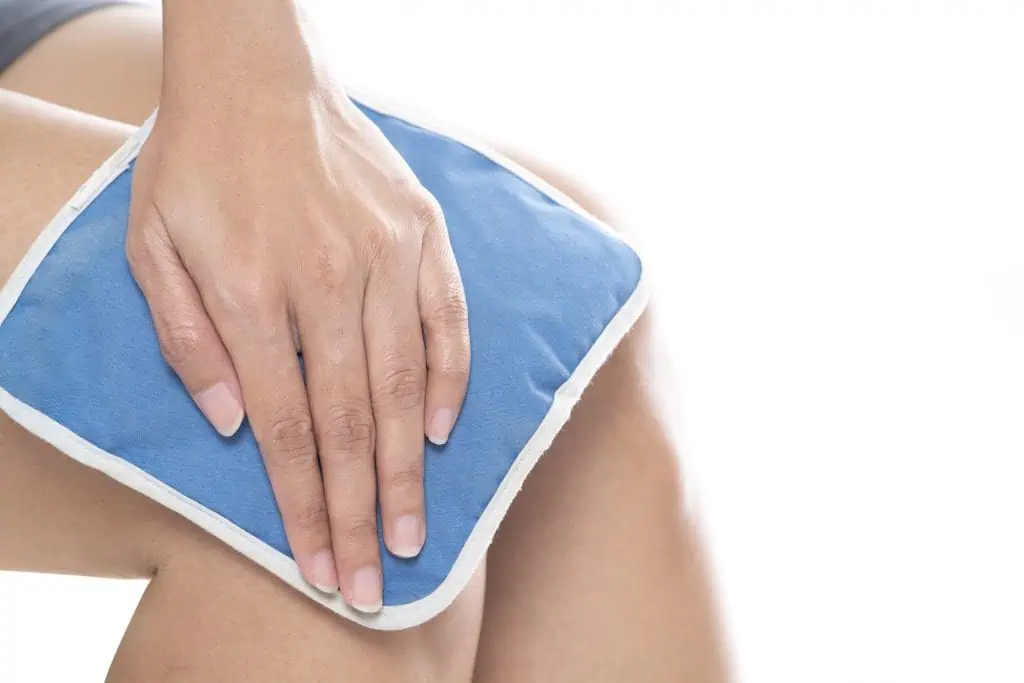
Other Uses and Benefits
Castor oil has a wide array of applications beyond alleviating knee joint pain. It’s renowned for its effectiveness in skin care, boosting the immune system, and improving digestive health. We’ll explore how its unique properties can benefit these areas.
Skin Care and Wound Healing
Using Castor oil: it’s a potent healer with antibacterial and antifungal properties, making it a great choice for skin care and wound healing. Its high ricinoleic acid content helps fight infections and accelerate the healing process. When applied to wounds, the oil creates a moist environment that can promote healing and prevent sores from drying out.
- Antimicrobial: Thwarts the growth of bacteria on the skin.
- Analgesic: Offers pain relief which can be beneficial for minor cuts and abrasions.
Immune System Support
Our immune system benefits from castor oil’s ability to enhance the production of lymphocytes, which are crucial in our body’s toxin removal process. These lymphocytes also fight off infections by targeting invading pathogens.
- Detoxification: Helps in draining the lymphatic system by increasing the movement of lymph, which carries toxins away from tissue to be eliminated.
Digestive Health
Castor oil’s properties as a laxative could make it an effective solution for those suffering from occasional constipation. It stimulates the muscles of the intestines, aiding in the movement of stool through the digestive tract.
- Sciatica and Abdominal Pain: While its primary use is for constipation, some might find relief for sciatica-related discomfort or abdominal pain due to its analgesic properties.
Always remember, it’s crucial that we use castor oil with caution and conduct a patch test to rule out any allergic reactions prior to applying it widely.
Possible Side Effects and Risks
When applying castor oil to address knee joint pain, we must be mindful of the potential side effects and risks involved. While castor oil can be helpful, incorrect usage or individual sensitivities can lead to discomfort and health issues.
Allergic Reactions and Sensitivities
Symptoms to watch for:
- Rashes: A rash may develop if the skin is sensitive to castor oil.
- Dizziness: In rare cases, topical use could lead to dizziness, indicating an adverse reaction.
- Irritated Skin: Castor oil may irritate the skin, leading to redness or itching.
Precautions:
- Conduct a patch test prior to wide-scale use by applying a small amount to the skin and waiting to see if a reaction occurs.
Overuse and Gastrointestinal Issues
Symptoms of overuse:
- Nausea: Ingesting large amounts may cause nausea.
- Vomiting and Diarrhea: An overdose of castor oil can lead to vomiting and diarrhea.
Suggested usage:
- Apply castor oil topically in moderation, following product instructions to avoid gastrointestinal issues that can arise with excessive use.
By staying informed of these considerations, we can use castor oil more safely and effectively.
Additional Considerations
Before using castor oil for knee joint pain, we need to address specific considerations to ensure safety and effectiveness. These include adapting the application of castor oil for special populations and seamlessly integrating it into one’s lifestyle for maximum benefit.
Usage for Special Populations
Children: For children with knee joint pain, we must use a reduced amount of castor oil due to their sensitive skin. It is crucial to conduct a patch test on a small area first to check for any allergic reactions.
Pregnant Women: Pregnant women should consult their healthcare provider before using castor oil, as it can influence the body beyond the intended topical use.
Babies: Under no circumstances should castor oil be used on babies’ joints without direct pediatric guidance due to their highly delicate skin and unique physiological responses.
Lifestyle Integration
- Yoga: Incorporating castor oil application before a gentle yoga session may enhance the joint’s flexibility and aid in the oil’s absorption.
- Detox: Some individuals integrate castor oil packs over the knee as part of a broader detox program, although the clinical efficacy of such practices has not been firmly established in clinical trials.
- Headache Relief: Although not directly related to the knee, applying castor oil with cooling essential oils like eucalyptus may provide soothing relief from headaches.
- Carrier Oil: When using essential oils for the knees, castor oil can serve as an excellent carrier oil, diluting more concentrated essential oils for safe topical application.

Complementary Treatments
In our pursuit of alleviating knee joint pain, we consider castor oil as just one facet of a multi-pronged approach. Layering various treatments can maximize relief and aid in managing symptoms more effectively.
Incorporating Essential Oils
In the realm of complementary treatments, essential oils are a natural ally. Particularly, eucalyptus and peppermint oils, when diluted with a carrier oil like castor oil, can provide a cooling sensation that helps reduce discomfort. We ensure the essential oil concentration doesn’t exceed the recommended percentage to avoid skin irritation.
- Eucalyptus: Mix 2-3 drops with a teaspoon of castor oil.
- Peppermint: Blend 2 drops with castor oil for a soothing effect.

Diet and Supplements
A diet rich in fatty acids and specific supplements can play a significant role in managing arthritis pain. Omega-3 fatty acids, found in fish oil, have been recognized for their anti-inflammatory properties. Moreover, incorporating ginger into our diet can also contribute to pain relief due to ginger’s known analgesic effects.
- Omega-3 Supplements: Consider daily supplementation as advised by a healthcare professional.
- Ginger: Add fresh or powdered ginger to meals, or drink ginger tea regularly.
Physical Therapy and Exercises
We acknowledge the importance of physical therapy and exercises, such as yoga, designed to improve joint flexibility and strengthen muscles around the knee. Under the guidance of a professional, we can work on a personalized exercise routine that might include the following:
- Yoga: Gentle poses that enhance knee joint mobility and reduce tension.
- Stretching and Strengthening Exercises: Aim for daily sessions to maintain joint health.
By combining these methods with potential applications of castor oil, we aim for a comprehensive approach to managing knee joint pain. It’s worth noting that before beginning any new treatment regimen, we should consult with a healthcare professional to ensure its appropriateness and safety.
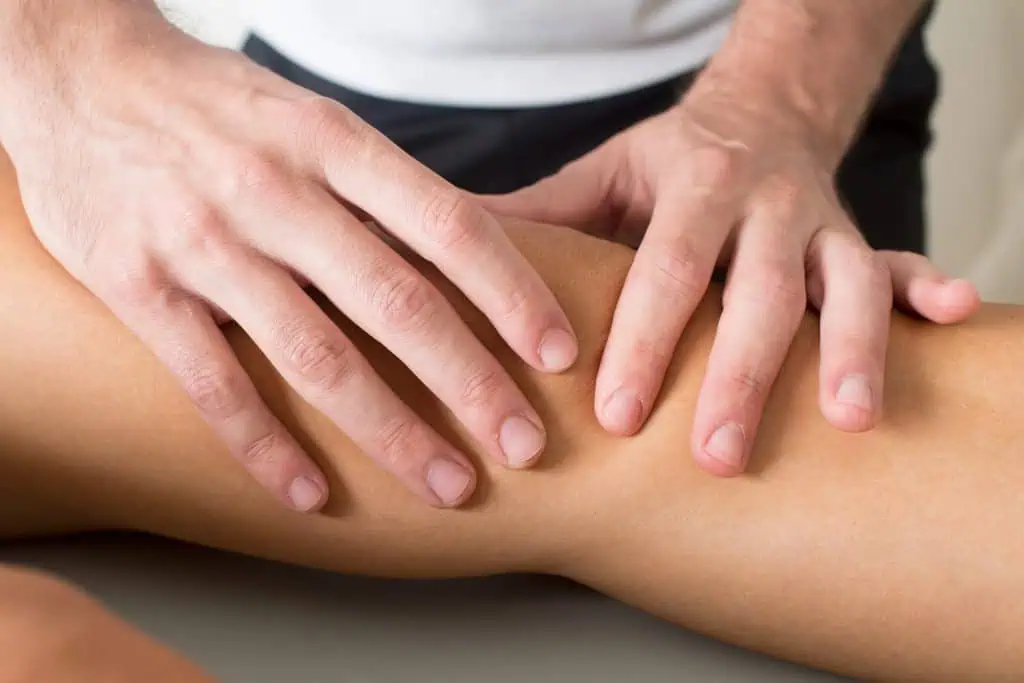
When to Seek Medical Advice
While we often turn to home remedies like the application of castor oil for managing knee joint pain, there are situations where it’s crucial to seek medical advice. Recognizing when professional intervention is needed can help prevent further complications and ensure the right course of treatment is followed.
Worsening Symptoms
If knee joint pain persists or worsens despite our efforts with home remedies, it’s time to consult a healthcare provider. Signs that should alert us include:
- Intense pain that impedes daily activities
- Increased or sudden swelling around the knee
- A fever that suggests an infection might be present
- Unable to fully extend or flex the knee
A healthcare provider can identify underlying issues such as fungal infections or possible damage that could lead to total knee replacement surgery.
Before Using Home Remedies
Prior to initiating any home treatment, including the use of castor oil, we should consider the following:
- Pre-existing Conditions: Consult with a healthcare provider if there’s a history of conditions like cancer cells or a current state like pregnancy to prevent any adverse effects.
- Allergies: Ensure that there is no allergy to castor oil, as it could exacerbate sore muscles and cause inflammation.
- Medication Interactions: Some natural remedies can interact with medications, especially if we’re targeting pathogens or treating chronic conditions.
Our feet bear much of our body’s weight, so attention to pain in these areas cannot be overlooked. Participation in a clinical trial may also necessitate medical advice before trying castor oil for joint pain relief. By understanding these guidelines, we can better manage our health care protocol for knee joint pain.
Conclusion
In tackling knee joint pain, we’ve seen that castor oil serves as a natural remedy that can offer relief. Its use is a traditional approach, taking advantage of its anti-inflammatory properties.
To apply castor oil, ensure it is warm and massage it onto the knee area. This should be done in a gentle, circular motion to aid absorption. It’s worth noting that a warm cloth soaked in castor oil can also be placed on the knee, and secured to enhance the soothing effect on sore joints.
Quick Guide to Using Castor Oil for Knee Pain Relief:
- Warm the oil slightly.
- Massage the oil onto the knee for 5 minutes.
- For a compress, soak a cloth in hot water and castor oil, then apply to the knee.
- Optionally, wrap with cling film.
While we share these tips, we encourage a cautious approach. Individual responses to home remedies like castor oil can vary. If pain persists, seeking medical advice is paramount.
In our exploration, we remain committed to informing you of home-based options for joint pain relief. Castor oil is just one of many tools in our wellness toolbox. It’s a testament to the resilience found in nature’s own pantry of healing agents.
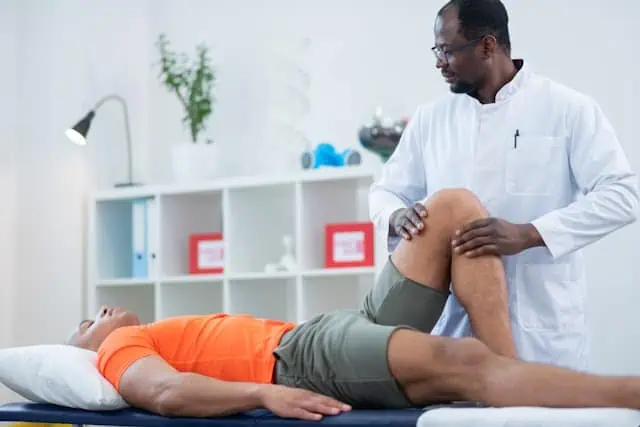
Frequently Asked Questions
In this section, we answer common queries about using castor oil for knee joint pain, ensuring you know the best practices and potential considerations.
Can castor oil be applied directly to the knees for pain relief?
Yes, castor oil can be applied directly on the knee joint. It is often recommended to massage the oil gently into the area to aid absorption and relieve pain.
What is the appropriate method for using a castor oil wrap for knee pain?
To use a castor oil wrap, begin by soaking a cloth in hot water and wringing it out. Then, apply castor oil to the cloth, wrap it around the knee, and secure it with cling film. This method helps maintain the oil’s warmth and provides sustained relief.
Are there any side effects associated with using castor oil for knee pain?
While castor oil is generally safe, some individuals may experience allergic reactions or skin irritation. It’s crucial to do a patch test before applying it extensively and to discontinue use if you notice any adverse effects.
How can castor oil be used to help with knee fluid issues?
Castor oil’s anti-inflammatory properties can assist with knee fluid issues by reducing swelling and fluid buildup. For enhanced effects, consider combining castor oil with herbs like calendula or goldenrod in a soothing pack.
What is the best type of castor oil to use for knee ligament injuries?
For ligament injuries, choosing a high-quality, cold-pressed castor oil is advisable because it preserves the natural healing compounds. Some products combine castor oil with other ingredients, like capsaicin, for additional pain relief.
How effective is castor oil for reducing inflammation in knee joints?
Castor oil contains ricinoleic acid, which has been shown to reduce inflammation and pain in the joints. Although individual results can vary, many users report significant reduction in inflammation after regular application of castor oil.













